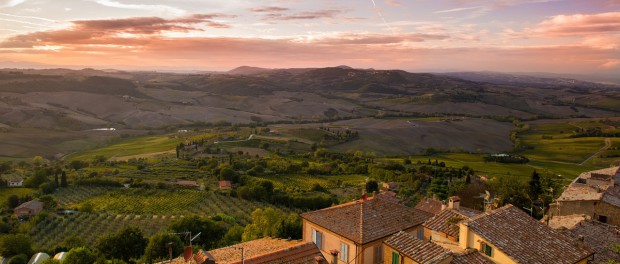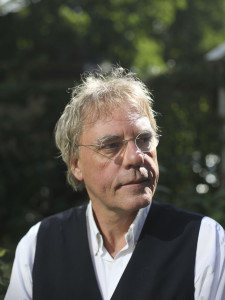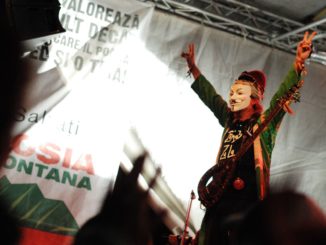In our #AfterCAP debate opener, rural sociologist Jan Douwe van der Ploeg outlines his vision for what he calls integrated rural development.

In recent years, European agriculture has effectively moved from a highly protected system towards a liberalized sector, with a strong orientation towards the world market. Price protection and predictability have been replaced by volatility and insecurity. Beyond there are calls to change the very objectives of agriculture and agricultural policies. The need for agriculture to play a substantial role in mitigating climate change, the need to contribute to the efforts to move beyond the financial and economic crisis and the need to create more employment, especially for young people are all new objectives that qualitatively differ from those that governed the previous modalities of the CAP.
With these changes in objectives and context of agriculture in the EU, the guiding image of ‘structural change’ has reached the end of its shelf life – simply because it no longer helps us to correctly perceive the main and most important trends and no longer suggests effective ways forward. Structural change is a very well known narrative: large farms perform better than small farms, which implies that the former will develop whilst the latter will, sooner or later, disappear –making space for the large farms to expand further.
Despite agricultural policies, which for decades aimed at strengthening structural change, small and medium farms did not disappear from the rural landscapes of western Europe. They are, and remain, the stronghold for food security and food sovereignty. They can contribute to the overall process of agricultural growth and should be at the heart of regional rural economies.
With agriculture in Europe entering into a new era of deregulated and globalized markets, the category of large high-tech farms (especially those that have incurred high levels of indebtedness in order to accelerate growth at farm level) has entered into a chronic crisis. They are ‘over-dimensioned’ and unable to face the new conditions requiring resilience: too big to be owned/managed by young farmers, too big to adapt and meet societal challenges and social demands.
By contrast, small and medium (especially of the low cost type) are much more resilient. In this situation, the continuation of income payments is an unacceptable anachronism. Distributing roughly 80% of the EU CAP budget to the 20% of large farms is, under the current conditions, like trying to get a dead horse to pull a cart.
Agriculture as a whole (or, ‘the rural’) needs to be regarded, and dealt with, as a precious constellation that harbours millions of family farms, sustains considerable employment and allows people to engage in attractive and autonomous work. It is also the custodian of beautiful landscapes and their reproduction, of cultural heritage and offers the promise of making a strong and positive contribution to the mitigation of climate change. It is where biodiversity is located and where ‘rural natures’ are the basis for food production. The rural and the agricultural activities also provide a space that is accessible to, and cherished by, urban people who use and enjoy it in a myriad of ways. To protect and further develop this agriculture, the EU needs a new policy. And a new policy needs a new guiding image that clearly demarcates the rupture with the previous period when ‘structural change’ was central.
Agricultural growth and rural development need to be redefined so they are both grounded on small and medium family farms, which still, despite fifty years of promoting structural change, make up the vast majority of farms. Instead of aiming at a (largely imaginary) jump towards ‘competitive farms’ (always situated at considerable distance from the real family farms), agricultural policy needs to be grounded in the reality of a sector that is composed of millions of small holdings and allow them the possibility to unfold their farms in ways that correspond with societal needs. This will be an abrupt and definitive adieu to a policy that essentially excludes and marginalises the majority of these farms. Such a policy is far from philanthropic – it corresponds with new socio-economic realities and it helps to address the economic, financial, environmental and energy crisis.
One essential aspect of reforming CAP involves undoing the historically-created separation of Pillars 1 and 2. Pillar 1 needs to be redesigned so that it fits into Pillar 2 and supports ‘integrated rural development’. This new policy framework needs to at least contain the following elements.
– Instead of being highly exclusive, it will be essentially democratic allowing access to everybody involved in agricultural and rural activities.
– It will contain a range of new incentives that strongly and explicitly support the style of low-cost farming (less debts, more added value).
– It will help to develop and disseminate agro-ecological knowledge so as to reground the style of low cost farming as much as possible -in locally available natural resources. Support is to be given to farmers so they can exchange their experiences and experiment on their farms.
– Movable upper ceilings on farm size need to be imposed on a regional basis. Subsidized farms that exceed the upper ceiling will only be allowed to continue if the ratio between labour objects and labour input is equal to, or lower than, that of the average farm. Thus, large rural estates might continue, provided that they generate enough employment.
– Income payments related to historical production are to be eliminated. New flat rate payments should be made and be conditional upon meeting criteria for landscape management and biodiversity protection.
– The maintenance of landscapes and the protection of biodiversity will be delegated to autonomous territorial co-operatives that will provide new forms of local and regional self regulation.
– Support will be given to construct new markets that are nested in direct relations between food producers and consumers and the provision of appropriate and adequate regulation schemes.
– Support will be given to enhance the multifunctionality of farms. Special support will be given to farms that engage in on-farm processing and for constructing new and/or developing existing small cooperatives that process and market food products.
– The inflow of young people into the agricultural sector (from both agricultural and non-agricultural background) will be stimulated further. The reform of over-sized farms should be used to make land available for young people wanting to start farming.
– New EU food supply chain legislation is urgently needed to accompany the new ‘integrated rural development’ policy – and should be an integral part of such a policy.
– There is a need to develop more appropriate techniques for representing the income generating capacity of family farms (of whatever size). Current farm accountancy techniques are biased and particularly misrepresent smaller and medium farms managed according to a low-cost strategy. The techniques used to express the ‘economic size’ of farms also misrepresent such farms.

Such ‘integrated rural development’ policy is an inclusive process that explicitly integrates agriculture in the development of the rural. It ensures that agriculture will positively contribute to maintaining high levels of well-remunerated and attractive employment and to the continuity of as many farms as possible.
Jan Douwe van der Ploeg is Professor of Transition Processes in Europe Wageningen University the Netherlands and Adjunct Professor of Rural Sociology College of Humanities and Development Studies China Agricultural University, Beijing, China






A beautiful vision for the transition of the CAP. A new paradigm is definitely needed. I have worked more than 20 years in NMS and in accession countries and the CAP instrumentarium has not been appropriate, and even in several countries contra productive to development of rural economies, where maybe 98% of the income support is harvested with the help of imported combined harvesters by 2% of the farmers on the expense of the vast majority. The paradigm still needs to be developed and made operational. Short value chains do not evolve by them selves. Paying willingness of the consumers is important. The sales of organics continue to increase in Denmark despite higher prices on organic products than on conventional (in average). But prices should reflect the real costs of production including all the externalities. Then the consumers will be even more attracted filling their cart in the shop or their basket in the local green market with local, traditional, organic or bio dynamic products. The more we can make this paradigm operational and make it a feasible and viable life for family farms and smallholders, the better. If I can help somewhere, let me know.
Current direct payments, that account for most of CAP budget, are clearly a case of environmentally perverse subsidies, and need to be scrapped as soon as possible. Public money should be paid only for the provision of very clearly defined public goods.